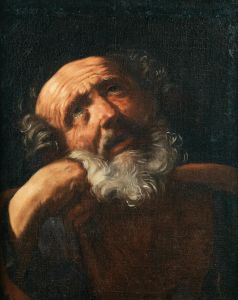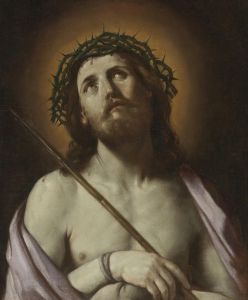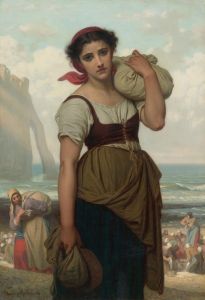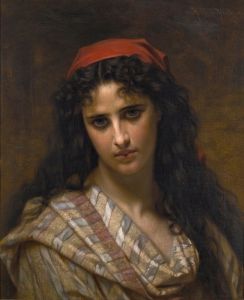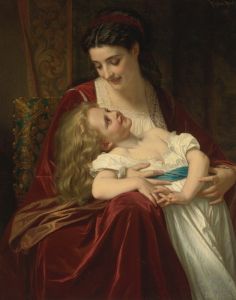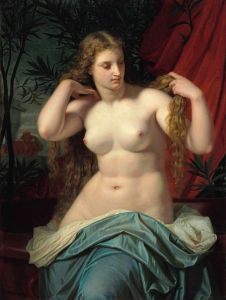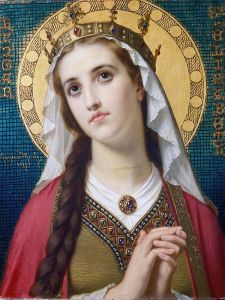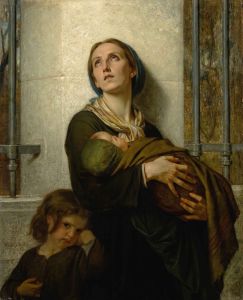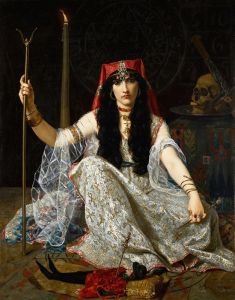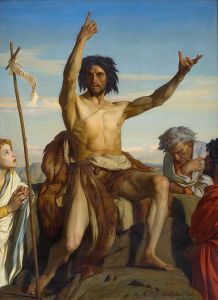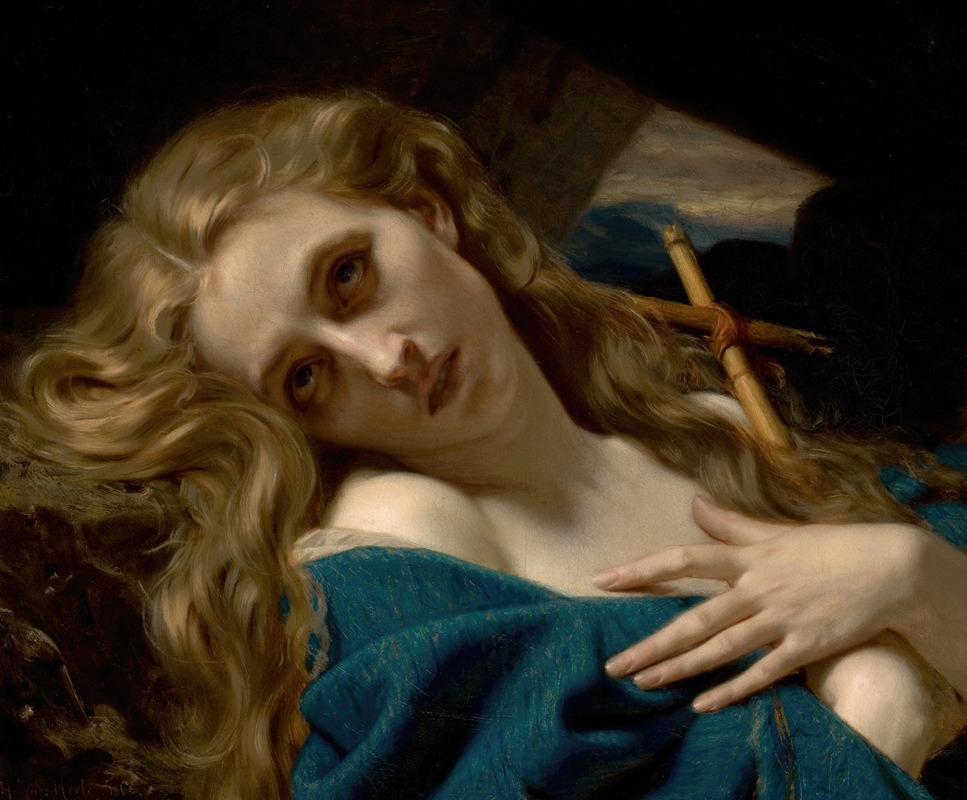
Mary Magdalene in the Cave
A hand-painted replica of Hugues Merle’s masterpiece Mary Magdalene in the Cave, meticulously crafted by professional artists to capture the true essence of the original. Each piece is created with museum-quality canvas and rare mineral pigments, carefully painted by experienced artists with delicate brushstrokes and rich, layered colors to perfectly recreate the texture of the original artwork. Unlike machine-printed reproductions, this hand-painted version brings the painting to life, infused with the artist’s emotions and skill in every stroke. Whether for personal collection or home decoration, it instantly elevates the artistic atmosphere of any space.
Hugues Merle's "Mary Magdalene in the Cave" is a notable 19th-century painting that exemplifies the artist's skill in capturing emotion and religious themes. Hugues Merle, a French painter born in 1823, was known for his genre scenes and portraits, often drawing comparisons to his contemporary, William-Adolphe Bouguereau. Merle's works frequently explored themes of sentimentality and human emotion, and "Mary Magdalene in the Cave" is a prime example of this focus.
The painting depicts Mary Magdalene, a significant figure in Christian tradition, who is often portrayed as a repentant sinner and a devoted follower of Jesus Christ. In Christian lore, after the crucifixion of Jesus, Mary Magdalene is said to have retreated to a life of penance and contemplation. This narrative is captured in Merle's painting, where she is shown in a cave, a common setting for her depiction in art, symbolizing her withdrawal from the world and her penitential life.
Merle's interpretation of Mary Magdalene is characterized by its emotional depth and attention to detail. The painting portrays her in a moment of introspection, with a serene yet somber expression. Her attire is simple, reflecting her renunciation of worldly pleasures, and the cave setting is rendered with a sense of isolation and tranquility. The use of light in the painting is particularly noteworthy, as it highlights her face and hands, drawing the viewer's attention to her contemplative state and the spiritual transformation she represents.
The composition of "Mary Magdalene in the Cave" is carefully balanced, with the figure of Mary Magdalene occupying the central focus. The surrounding cave is depicted with a subdued palette, enhancing the contrast between the figure and her environment. This technique not only emphasizes her presence but also conveys the theme of enlightenment and redemption, as the light seems to emanate from within her, symbolizing her inner spiritual awakening.
Hugues Merle's work was well-received during his lifetime, and he exhibited regularly at the Paris Salon, where he gained recognition for his ability to convey emotion and narrative through his paintings. "Mary Magdalene in the Cave" reflects the 19th-century fascination with religious and moral themes, as well as the era's interest in exploring the complexities of human emotion and spirituality.
The painting is an example of Merle's adeptness at combining technical skill with a deep understanding of his subjects, resulting in a work that resonates with viewers on both an aesthetic and emotional level. While specific details about the painting's current location or provenance are not widely documented, it remains an important part of Merle's oeuvre and a testament to his contribution to 19th-century French art.
Overall, "Mary Magdalene in the Cave" by Hugues Merle stands as a significant work that captures the essence of its subject with sensitivity and artistic finesse, reflecting the broader cultural and artistic trends of its time.








